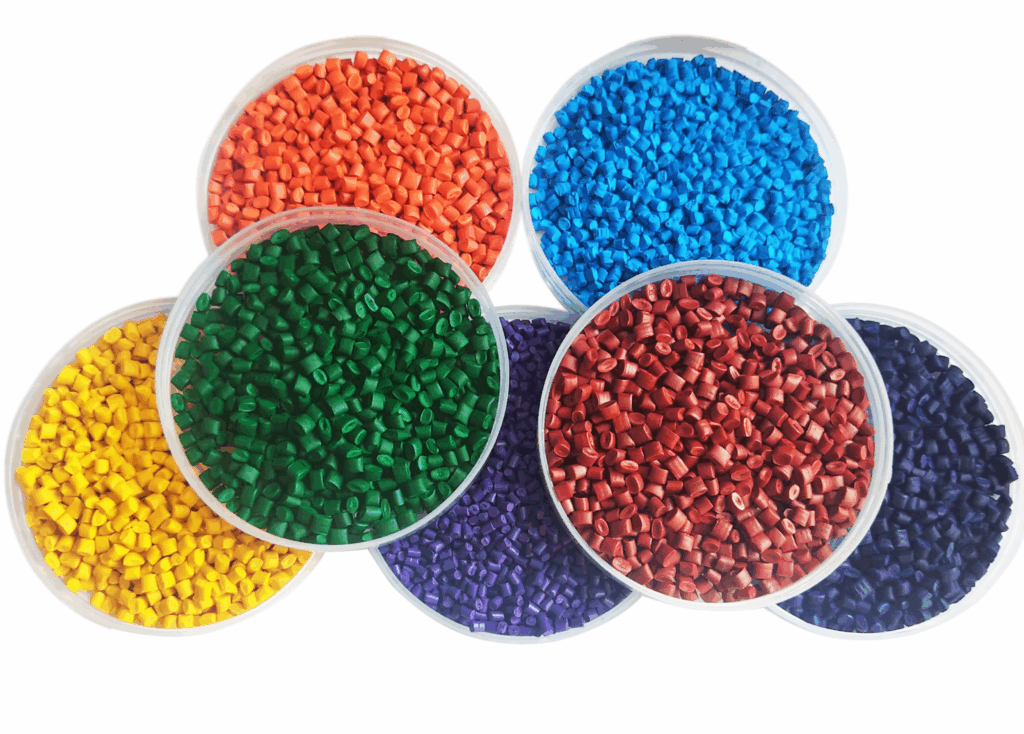
TPU, or thermoplastic polyurethane, has become a valuable material in modern production due to its ability to combine the hardness of plastic with the flexibility of rubber. TPU Masterbatch, which is colors and additives applied as a concentrated mixture to enhance TPU polymers, has completely transformed the way producers customize this great material. Whether you’re producing consumer goods, medical equipment, shoes, or auto parts, it pays to learn the fundamentals of TPU masterbatch to achieve optimal results. This article analyzes five key considerations that each and every set of professionals must be aware of before they use TPU masterbatches in production.
The Chemistry behind TPU Compatibility
For TPU masterbatches to work well with thermoplastic polyurethane base materials, they must be precisely chemically compatible. TPU’s molecular structure presents a special difficulty for appropriate dispersion since it has both hard and soft segments. High-quality masterbatches include carrier resins that are specially designed to complement the chemical profile of TPU, guaranteeing a smooth integration without sacrificing the intrinsic qualities of the polymer. Knowing this chemical connection while choosing a masterbatch helps to avoid processing problems and preserves the remarkable mechanical properties that add value to TPU.
Processing Window Considerations
Working with TPU masterbatches necessitates careful attention to processing conditions since TPU is temperature-sensitive. The ideal processing window, or the range of temperatures where the masterbatch flows effectively without deteriorating, is often less than for conventional plastics. Expert manufacturers monitor melt temperatures, residence periods, and shear conditions while employing TPU masterbatches. This exact attention to detail prevents common issues like color streaking, uneven dispersion, or degradation that might compromise the final product’s usefulness and attractiveness.
Enhanced Performance Attributes
Modern TPU masterbatches provide customized performance increases that cater to certain application requirements, going beyond simple colors. Advanced formulations can improve flame retardancy for safety-critical parts, offer antimicrobial protection for medical components, and greatly increase UV stability for outdoor applications. Think of the functional qualities that would enhance the value of your particular product while assessing TPU masterbatches. These improved qualities frequently remove the need for subsequent treatments, which might lower production costs overall while enhancing the performance of the final product.
Influence on Mechanical Properties
If not chosen carefully, even well-formulated TPU masterbatches might alter the mechanical properties of your finished goods. Flexibility, hardness, tear strength, and abrasion resistance are all directly impacted by the loading rate, which is the proportion of masterbatch added to virgin TPU. To find the ideal balance between the intended color intensity and maintained mechanical characteristics, skilled producers carry out extensive testing at different loading rates. This systematic methodology guarantees that your products achieve the visual appeal that clients demand while preserving the valuable physical properties of TPU.
Environmental and Regulatory Compliance
The TPU product regulations are always changing, especially in sectors like children’s toys, food packaging, and medical devices, among others. Quality TPU masterbatches at the high end meet stringent industry certifications. Make sure providers offer thorough documentation and testing results for all market-relevant regulatory requirements before integrating TPU masterbatches into your production. This care avoids expensive compliance concerns while safeguarding customer safety and your company’s brand.
Conclusion
Through a comprehensive understanding of these crucial elements of TPU masterbatches, as provided by the best masterbatch suppliers in India, producers can make informed decisions that enhance product quality, optimize manufacturing processes, and establish unique competitive advantages. These insights lay the groundwork for a successful adoption in your manufacturing processes, regardless of whether you’re new to dealing with TPU or want to optimize current implementations.






